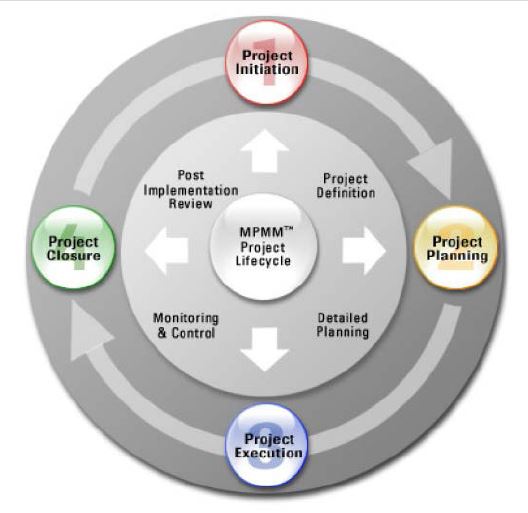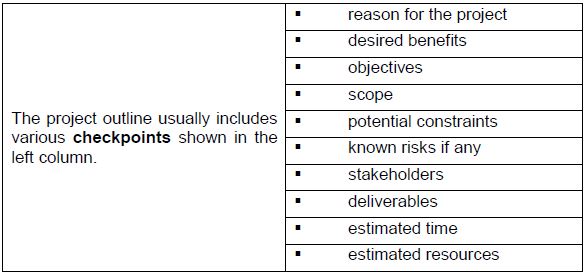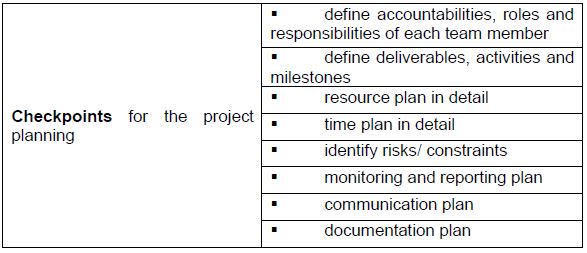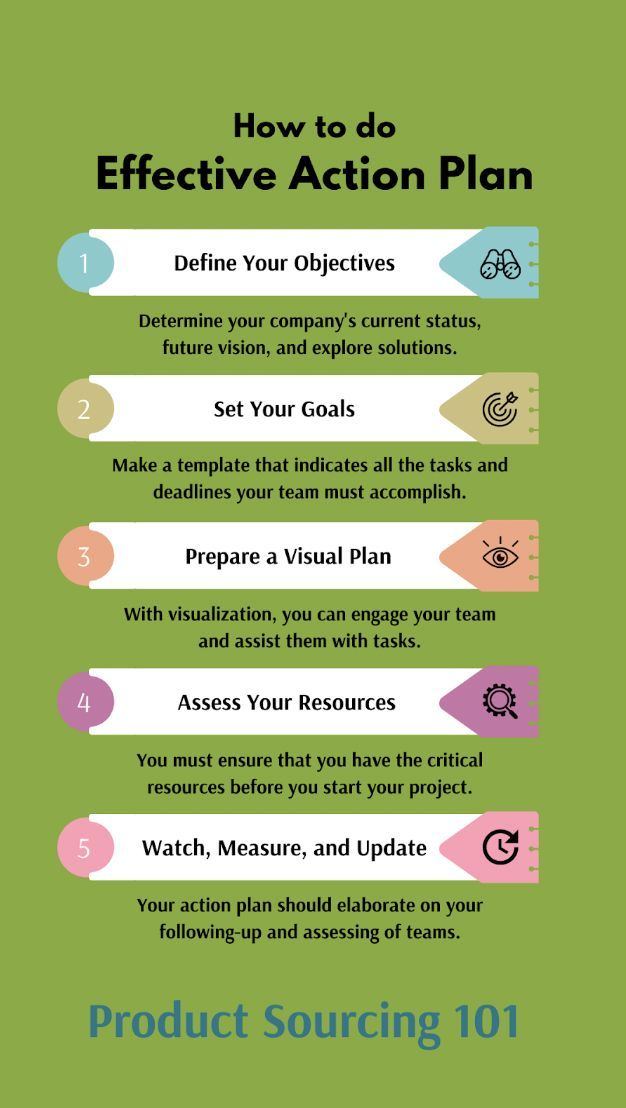Introduction to Project Management PDF
This handout provides you with some fundamental inputs of project management including its general rules of application. After a general introduction, the focus will rely on how to write a project action plan.
Project and Project Management Differences
A Project is “a temporary endeavor designed to produce a unique product, service or result with a defined beginning and end, undertaken to meet unique goals and objectives†(A Guide to Project Management Body of Knowledge).
The essential features of a project are that it is innovative, time-constrained, and resource-constrained. Different from routine plans, project tasks are often used as preparation for future routine activities.
A successful project must:
- deliver the outcomes and benefits required by the stakeholders
- create and implement deliverables that meet agreed requirements
- meet time targets
- stay within financial budgets
- involve all the right people
- make the best use of resources in the organization and elsewhere
- take account of changes in the way the organization operates
- manage any risks that could jeopardize the success
- take into account the needs of staff and other stakeholders who will be impacted by the changes brought about by the project.
Project management is “the application of knowledge, skills, tools, and techniques to project activities to meet project requirementsâ€. (A Guild to Project Management Body of Knowledge) Its immediate goal is to assure the successful completion of the project. In its practice, this management process is frequently connected with risk management due to its complexity and unpredictability of future happenings.
In this regard, the project manager, who serves as the intermediate between the project board (project sponsor) and the project team, often manages the risks of the project.
That means that the project manager should be able to recognize potential risks or resistance in good times, to communicate them (it), and to set up measures that will allow him to intervene when such risks or resistance arise(s). In addition, project managers are more and more challenged with a great deal of social competence.
Typical reasons for project failure are
- failure to take into account the needs and influences of stakeholders
- failure to communicate and keep the stakeholders informed of developments
- lack of attention to the impact of project work on the normal business of the organization
- producing expensive “Gold plated†solutions when simple workable products would suffice
- failure to identify and deal with the many risks that can affect the achievement of project objectives
- insufficient attention to planning, monitoring, and control of the work of the project.
Project Management Activities in the Project Cycle Phases

Project Initiation
Project Initiation is often regarded as the project start-up. It is the very important preparation stage of project work. In this phase, the problems or case studies are defined and analyzed.
A project initiative is then put forward for consideration. After a feasibility study, if the higher management or the responsible party decides for setting up a project to tackle the problems or test the solutions, project work will start. In this case, a project manager will be officially appointed.
The project initiative is usually drafted by the party that raises or is familiar with the field’s problems and challenges. This person is normally appointed as the project manager or is deeply involved in project management. The project initiative will usually be further revised and finalized as a project outline for documentation.
At the end of the first phase, the project outline will be agreed by all the parties involved. The project manager begins to recruit his team. A detailed phase of planning follows.

Project Planning
Project Planning is the phase of detailed planning. The project manager needs to fulfil the tasks of recruiting the right people, outline the activities and timeframe. In addition, financial plan and resource distribution need to be specified. One tool that gives project planning a structure and helps you with it is the Project Action Plan which will be further explained in the next chapter.

Checkpoints for Project Planning
Project Execution
Project Execution is the third phase in the project lifecycle. The main goal at this stage is to implement the planned activities in order to achieve the deliverables within the given time and resource frame. However, no matter how precisely the project has been planned, in practice, it might take another route.
This would not mean the failure of the project. Control at this stage is one of the most challenging tasks for the project manager in order to manage changes and adjust the project plan accordingly.
Project Closure
Project Closure marks the formal completion of a project. In this stage, the deliverables will be presented to the stakeholders. A successful project will meet the defined objectives. In general practice, besides the project report to the stakeholders, a project review report will be drafted for the documentation and evaluation of the project. A lessons-learned workshop might be organized so that the experiences of the project can be communicated among the stakeholders.
During the project management process, the project manager is constantly facing the challenges of balancing the scope1, cost, and time, which is known as the project triangle.
These are the three competing constraints affecting the project performance: increased scope typically means increased time and cost, a tight time constraint could mean increased costs and reduced scope, and a tight budget could mean increased time and reduced scope.
If the project must be done fast and well, then the cost will rise; vice versa, if the project must be done low-cost and fast, the quality or scope will not be satisfying. This principle is also known as “pick any two†in project management.


